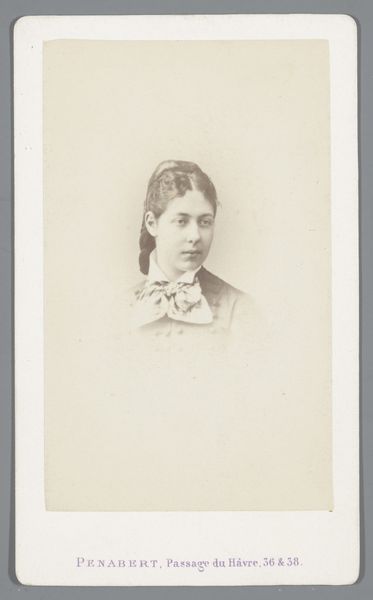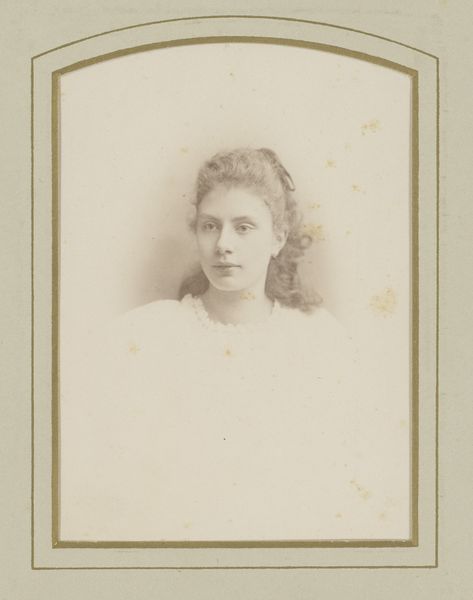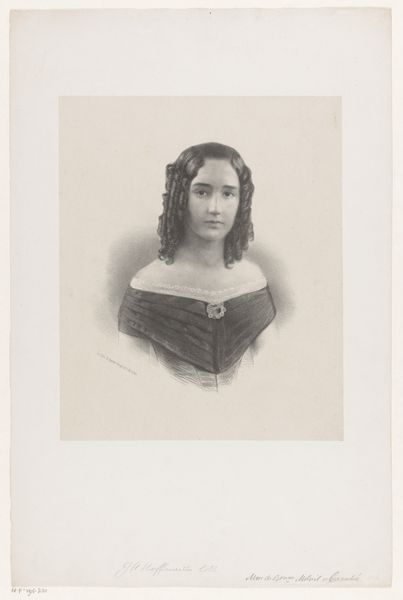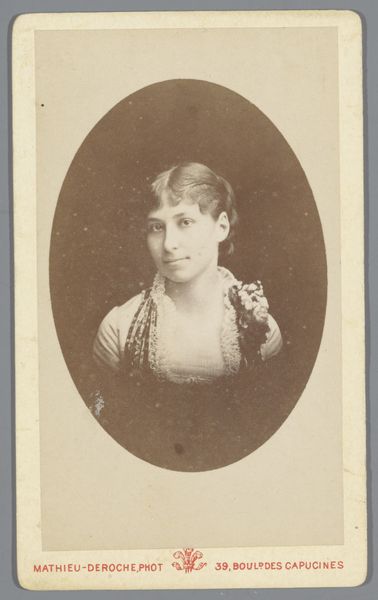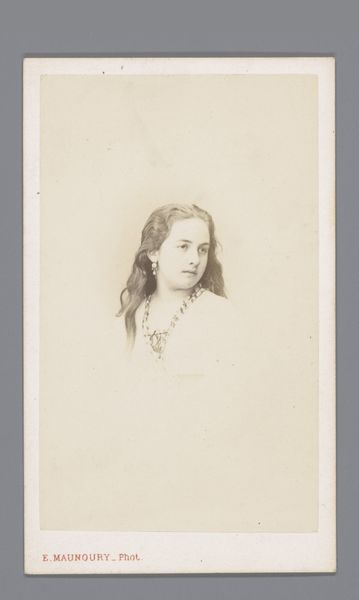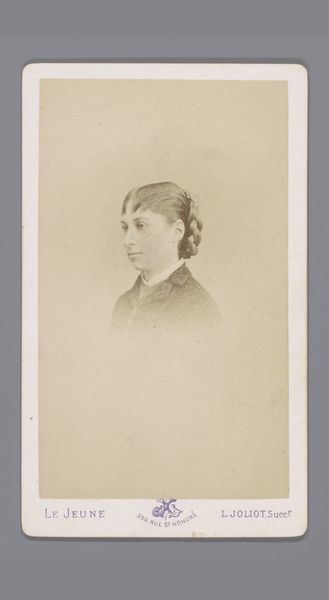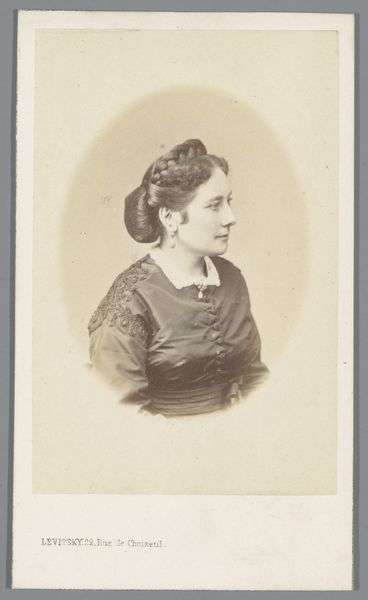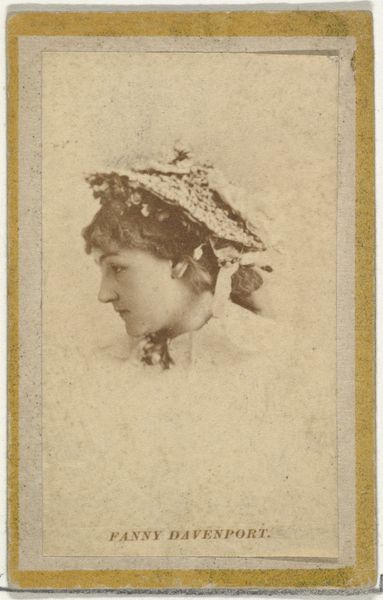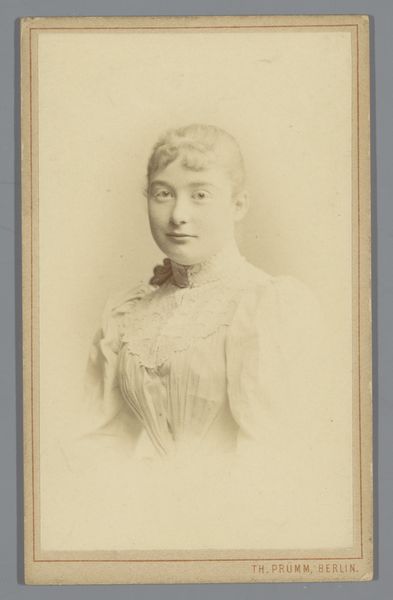
daguerreotype, photography
#
portrait
#
daguerreotype
#
photography
#
genre-painting
#
academic-art
#
realism
Dimensions: height 105 mm, width 63 mm
Copyright: Rijks Museum: Open Domain
Curator: What strikes me about this daguerreotype, formally, is the incredibly soft light, particularly diffused around the young woman’s face. The sepia tones add to its gentle, almost ethereal quality. Editor: Indeed. This portrait, dating roughly between 1865 and 1890 and titled "Portret van een onbekende jonge vrouw," is fascinating in what it tells us about the democratization of portraiture in that period. Photography was becoming more accessible, moving beyond the realm of the wealthy elite. Curator: I’m intrigued by the composition itself. Note how the photographer frames the subject; her slightly averted gaze and simple, elegant clothing direct us right back to that pensive expression. Editor: And the standardization of portraiture is significant here, too. Similar poses, clothing, and backdrops were repeated across studios as photography became a commercially viable practice. Consider the sitters – this wasn't only a visual representation of that specific individual, but also reflected a statement about their place in society. The "genre painting" theme suggests aspirations of fitting into or representing a specific group. Curator: Agreed. The limited tonal range actually draws attention to the subtleties of texture, like the braiding in her hair and the sheen of her ribbon, details easily lost in a sharper image. Editor: Exactly, and analyzing images such as this gives art historians a richer understanding of not only who this was, but about socio-economic conditions in Paris in the latter half of the 19th century. That studio on Passage du Havre was capturing a moment in visual culture history. Curator: Looking at the artist’s careful control of tonal range and the arrangement of form makes it an intimate window, don't you think? Editor: It reminds us of how accessible and essential photography became for expressing aspirations. Curator: A fascinating look at form and practice joining together. Editor: A cultural moment, forever etched in time!
Comments
No comments
Be the first to comment and join the conversation on the ultimate creative platform.
